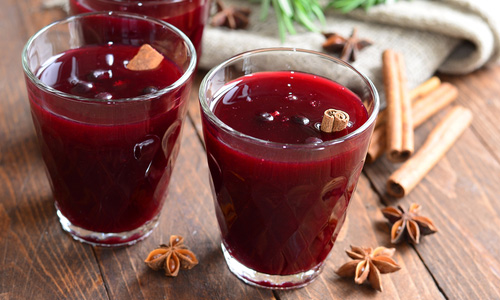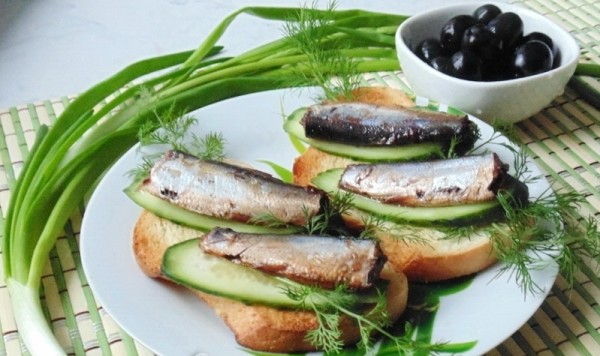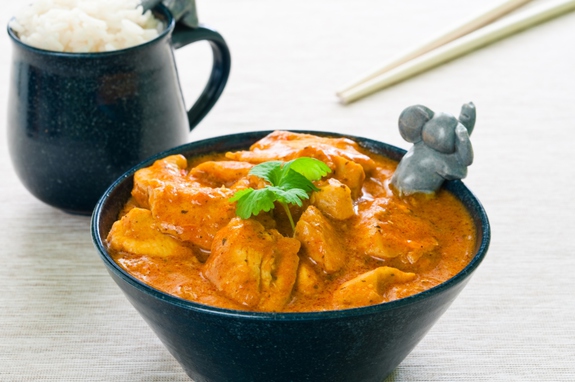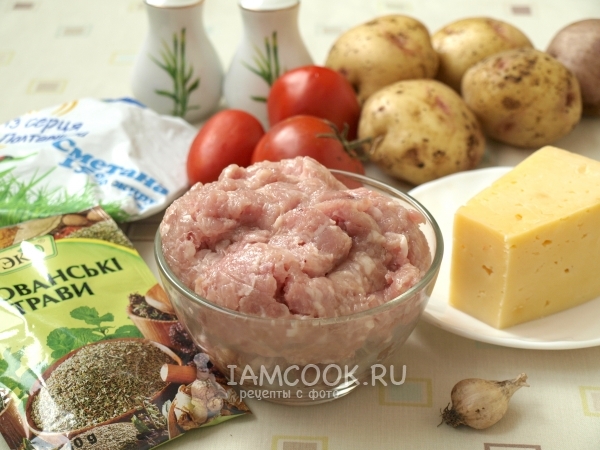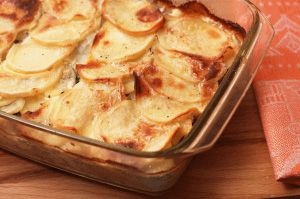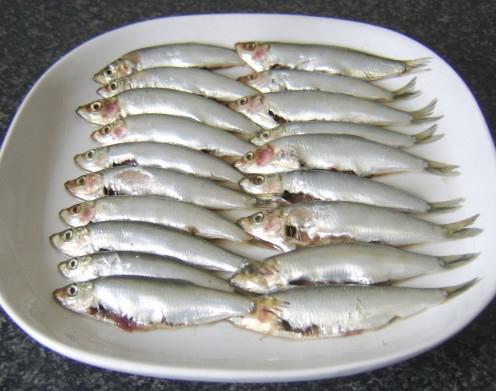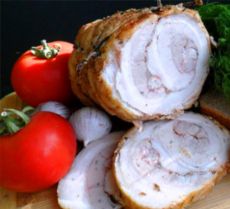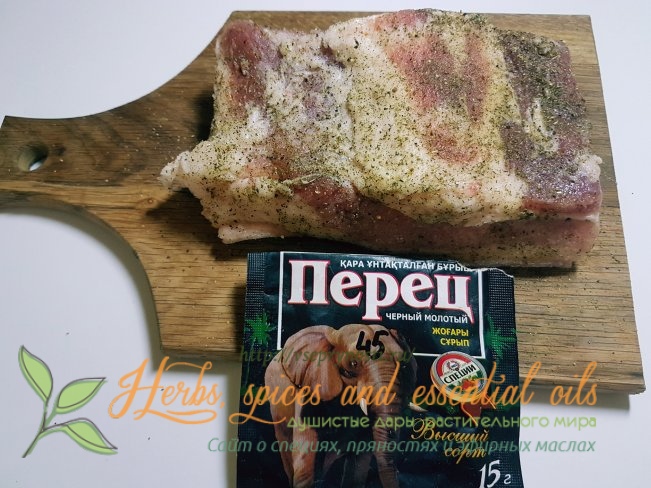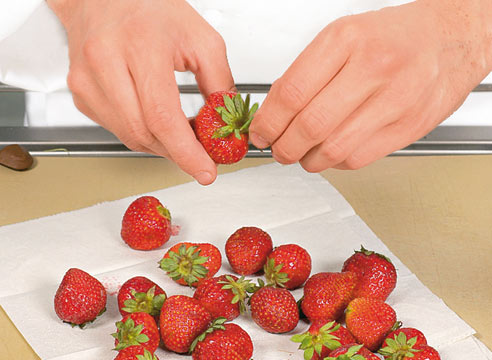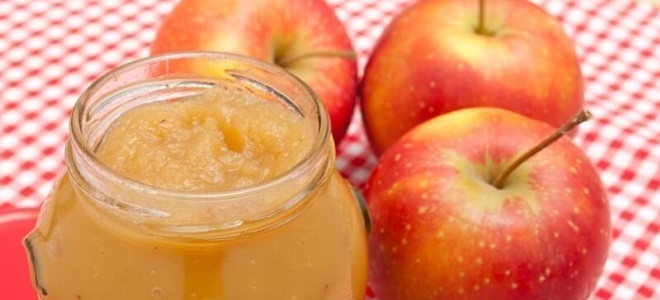What is curry (dish)? Curry.
For the inhabitants of India, the fame of spicy lovers has long been entrenched. And this is true - not every European stomach can pass the test of national Indian cuisine. Curry is especially famous - spicy sauce from local seasonings, which is flavored with everything in India - vegetables, and beans, and meat, and fish, and rice. It is all the more interesting because, according to a recent survey in England, the majority called the national English dish exactly curry. Probably because the English call the word curry all dishes seasoned with hot sauces.
It is believed that the word "curry" is of Tamil origin, and simply means "sauce." But, strictly speaking, the word "curry" has several meanings. This sauce, and dishes prepared using a mixture of spicy and hot seasonings, and the leaves of a tree nim (Murraya koenigii). The British believed that it was precisely because these leaves were added to the sauce (“kari-patta” in local terms) that it was called “curry”. But in fact, the leaves of a nim tree are not a necessary component of curry sauce at all. And the reference curry recipe does not exist in the world. Curry sauce has long gained popularity all over the world with the British light, but everywhere it is cooked differently.
What curry is made of

Of course, curry sauce made in England is not at all like curry made by a housewife from the Indian state of Andhra Pradesh. It is in the southern provinces of India that the sharpest pepper in the world is put in curry - a type of Naga Jolokia chili pepper, a ghost pepper. Compared to this pepper, Mexican Tabasco is a baby caramel. Those who are not ready for such radical decisions have the opportunity to buy seasoning to their taste, since today thousands of types of curry are produced.
This curry includes about 30-40, or even more ingredients - spices and herbs. Curry bought at the store most often looks like a homogeneous powder of golden yellow color, although it is a mixture of a dozen or two crushed spices. Curry yellow is caused by turmeric, or Indian saffron. The more turmeric, the richer the color of curry. Curry has almost no effect on the taste of curry. Curry paste is also produced, which can be not only yellow, but also red and green. Red curry has more cayenne pepper, and green, popular in Thailand, has a lot of green pepper. Curry also has caraway seeds, cardamom, fennel, cloves, shambhala (or simply fenugreek), ginger, coriander, black and white pepper, chili pepper, garlic and other spices.
How to make curry yourself

Shop sauces, dry mixes and curry pastes - for undemanding and lazy. Just add a few teaspoons of powder or curry paste to the main dish and you're done. But the Indians, Thais, residents of Bangladesh and Sri Lanka make curry immediately before cooking, from the freshest ingredients, by hand, and it turns out simply divine. First, all the ingredients for the curry are fried in a dry frying pan, over low heat, until tender brown, and then ground in a mortar. Of course, a mortar and pestle are for true purists. Everyone else can use an ordinary coffee grinder - curry powder will turn out small and homogeneous. Use the cooked curry immediately, and if stored, only in glass or porcelain dishes with a lid, and not longer than 3-6 months.
To make Madra hot spicy curry you will need to take 3 small dried chili peppers, a tablespoon of turmeric and coriander seeds, two teaspoons of caraway seeds and fenugreek, a teaspoon of mustard seeds, a couple of cloves of garlic, 3 cloves (spices, not flowers !), 2 teaspoons of salt and a small piece of cinnamon.
A softer curry will turn out if you use a mixture consisting of a tablespoon of turmeric, two tablespoons of ground cumin seeds, the same amount of ground coriander, and add half a teaspoon of ground ginger, red pepper and mustard seeds to this.
Despite a rather modest set of ingredients, a homemade curry mixture will always be more aromatic and quality than a store. After all, it is not known how long and how correctly store powders and curry pastes were stored. But if you don’t have time to bother with cooking curry, buy curry in metal cans or glass bottles of a dark color, since in a transparent container, under the influence of ultraviolet light, the essential oils of spices quickly decompose, and the curry loses its taste.
Curry: benefits and harms
Curry is believed to be a terribly useful thing. Scientists have found curcumin in turmeric, a miracle substance that saves cancer and senile dementia. Cumin, as it turned out, strengthens the immune system, has anti-inflammatory, diuretic and bactericidal properties. Cardamom seeds improve digestion, soothe nerves and are beneficial in asthma. Clove smells great and is also an anti-inflammatory, and fennel seeds are a real storehouse of vitamin C, potassium and folic acid. Fenugreek helps the body fight sclerosis, and is also a pretty strong aphrodisiac. You can be skeptical about listing the beneficial properties of curry, but it is interesting to note that in places where curry is consumed almost daily, the incidence rate of Alzheimer's disease among people over 60 is only 5%.
Against this background, the harm from eating curry looks pretty pale. In addition to damage to the stomach from too hot sauce and allergic reactions to some components, there is no particular harm from curry. Unless it is not recommended to use curry for people with blood coagulation problems, as well as taking anticoagulants, aspirin and its derivatives.
Check out the spice shop, check your homemade spices and try to make curry at home - you will definitely get something incredible!
Many people prefer to eat food that contains a variety of spices. Most housewives know about the purpose of the spice mixture, called curry. But few of them are aware that curry is a seasoning that has a large list of useful properties. The most interesting thing is that this seasoning plays an important role in the diet of overweight people. After all, it allows you to get rid of extra pounds and body fat. You will learn about this and much more interesting in this article.
Origin and interesting facts
Curry is based on turmeric. In fact, curry is a seasoning of Indian origin. And the word "kari" is of Tamil origin. The English colonialists originally brought this spice to Europe.
Murraya koenigii is an Indian shrub whose leaves are also called curry. They are used as spices, but only fresh leaves possess such properties. Outwardly, they look like laurel leaves. Fresh produce a strong odor similar to the aroma of anise, but with notes of citrus and grass. Sometimes dry leaves of this shrub are added to the curry seasoning, but, unfortunately, they are prone to a rapid loss of their aromatic properties.
Curry is a seasoning whose composition may contain up to 30 different ingredients. The list of components depends on the place of production and the manufacturer itself. For example, in India, cooks prefer to cook curry immediately before use, and the composition of the seasoning depends on the taste preferences of the cook.
Structure
Before talking about the application and useful properties of this seasoning, let's get acquainted with what is included in it. So, curry is a seasoning, the composition of which at first glance is not surprising. These are turmeric root, red pepper, coriander, cumin, cardamom.

Additional ingredients are: allspice, black pepper, cinnamon, ginger, curry leaves, cloves, nutmeg, garlic and others.
The mixture has a bright yellow color, a strong aroma. As a rule, this seasoning does not have a very sharp taste. But there is a spicy version of this mixture of spices.
An interesting fact is that the dry leaves of the curry shrub are an optional component in the collection of spices, which is called "Curry".
Curry Seasoning: Cooking Use
Typically, curry leaves are used by cookers to make hot vegetable dishes, soups, and vegetable snacks. After all, this seasoning has an exquisite “burning” fragrance that can “warm” and make the taste qualities of the first and second hot dishes richer.

In Ceylon, as well as in India (its southern part), curry leaves are the complement of dishes from vegetables and cereals. They are also used to flavor soups.
If fresh leaves are used, then it is recommended to fry them initially until a crunch appears. For example, residents of India often fry the leaves in "gi" - ghee, which is prepared on the milk of a female buffalo. Since the oil on which the leaves were prepared acquires the flavor of seasoning, it is not discarded, but is used further.
Indians have a folk tradition: chefs with curry leaves add milk and coconut pulp to their dishes. As for the inhabitants of the west coast, they like to combine this spice with seafood and fish. Shrimps cooked in a sauce with curry, coconut milk, ginger, green chilli, and onions have a special taste.
But for the settlers of Sri Lanka, curry is a seasoning that they add to chicken and beef dishes. Also, cooking this vegetable dish “cat-rotti” is not complete without this spice.
Curry Properties
Curry is a seasoning whose properties are simply surprising. After all, for sure there are no more spices that can have such a beneficial effect on the human body.
What sways freshly picked leaves, they are distinguished by the richness of essential oil. True, its benefits have not been confirmed by scientific medicine, but aromatherapists have successfully used it in the treatment of diabetes mellitus, to cleanse the skin and to prevent hair loss. Also, the leaves of this spice are especially shown to owners of sensitive skin, prone to various allergic reactions, and suffering from eczema or peeling of the skin. In addition, curry leaves contribute to better absorption of the protein found in legumes and cereals.

They also say that if ulcers appear in the mouth, then chewed curry leaves should be applied to these wounds. As a result of such an unpretentious procedure, the sores will very soon heal, and then completely disappear.
Useful properties of curry seasoning ingredients
Curry is a seasoning, the useful properties of which are distinguished not only in the fresh leaves of the bush, but also in the components of the dry mixture. It is understood that each ingredient of dry Curry seasoning separately has certain healing properties. Briefly look at some of them.

For example, cloves are characterized by a pronounced disinfecting effect, and also resists infections.
Cinnamon is a natural stimulant of immunity, a means of preventing viral infections. This spice has a pronounced expectorant effect. But cinnamon in the form of essential oil is used as a natural tonic. If you regularly use cinnamon in cooking, it will help to improve memory, help the brain, increase efficiency.
And as another example, coriander. It is useful for diarrhea, they treat ulcers in the mouth, swelling and swelling. With it, you can adjust the blood sugar level. Also coriander is able to help with conjunctivitis, anemia. It is recommended to use it to improve digestion.
Some scientific studies
In the state of Oregon (USA), one university conducted studies that showed that with daily use of curry, the human immune system strengthens.
But British scientists with their studies showed that some components of curry seasoning can support chemotherapy sessions, that is, they contribute to the death of cancer cells that have not died during therapy.
Swedish scientists (Linkoping University) claim that eating curry at least twice a week can prevent dementia, Alzheimer's disease, which kills brain activity.
Curry (seasoning): where to add?
Previously, we got acquainted with the peculiarities of curry use by the inhabitants of India, Ceylon, Sri Lanka. But it is worth noting that in our country the mixture of spices "Curry" is also very popular. Especially among fans of spicy.

Curry is a seasoning that is used in recipes of various kinds: meat, fish, vegetables, etc. But I want to note the excellent taste of chicken cooked with this mixture of spices. Nobody can tear themselves away from such a chicken. Thanks to this, she becomes a welcome guest at the everyday and festive table. We suggest you familiarize yourself with a simple and very delicious recipe for spicy chicken wings.
Spicy chicken wings
So how to cook chicken wings if curry seasoning is added? The recipe is very simple. We will need:

- 12 wings (chicken);
- 180 ml of oil (vegetable);
- 2 cloves of garlic;
- 1 tbsp. l paprika, caraway seeds, turmeric, cilantro, coriander, lemon zest;
- 2 tsp. chili peppers and curry.
If the wings were bought frozen, then they should first be thawed. If desired, several small incisions (two are recommended) can be made in the thickest part of each wing with a thin sharp knife. In a separate container (preferably not plastic), you need to combine crushed garlic and all the listed seasonings. Mix everything thoroughly. We fill our wings with this mixture. Well interfere. Leave to soak in the refrigerator overnight. In the morning we get the pickled wings, fry in a pan in oil. A golden crust should form on both sides. Ready-made wings are served to the table hot or cold (at your discretion).
In countries where curry seasonings have been eaten almost from infancy, its benefits and harms have long been known to everyone. In our country, few people are interested in such information. But in vain. Because this spice mixture has a lot of positive qualities with almost no flaws. Let's get it together.
Harm Curry
As such, a spice mixture does little to no harm. Its danger lies in possible allergic reactions to any component.
Another interesting property of curry seasoning is its ability to influence blood formation processes and accelerate blood flow. Therefore, it is strictly forbidden to eat it:
- Hemophiliacs. Sudden internal bleeding can lead to a deplorable outcome.
- At the same time as aspirin and its derivatives. A powerful blood-thinning effect is a very nasty thing.
- Patients with thrombophlebitis and people at risk. Increased blood flow may contribute to tearing off a blood clot.
- People who have had a heart attack or stroke. Blood pressure surges will not bring anything good.
Curry seasoning has no more harmful qualities. Well, perhaps the cook in an Indian restaurant will make the mixture too spicy. Then there may be discomfort in the stomach and intestines.
The benefits of curry
In connection with the rapid spread of the fragrant mixture throughout the world (this happened with the easy hand of the British), scientists began to actively explore the beneficial properties of curry. And it turned out a lot of interesting things.
For example, it has already been scientifically proven that regular use of seasoning in food (in moderation) significantly stimulates the body's activity in the fight against cancer cells. In particular, this applies to malignant tumors of the gastrointestinal tract and digestive system.
For the heart and vascular system, seasoning curry has saved another positive effect. It perfectly removes bad cholesterol. At the same time, it cleans vessels and capillaries of atherosclerotic plaques. People who regularly flavor their curry foods are several times less likely to have a stroke and a heart attack.
Curry can also be beneficial for the digestive system. A mixture of spices normalize the balance of native bacteria in the intestine, enhancing overall immunity. And some herbs in curry seasoning almost completely suppress the growth of pathogenic microorganisms and bacteria. That is why in India, a country full of unsanitary conditions, curry is added to absolutely all dishes.
The reproductive system of both men and women is always grateful for the positive effects of curry seasoning. Spices included in the composition increase blood circulation in the pelvic area. Which, in turn, is good for enhancing sexual desire and sexual desires. Maybe that is why so many people live in Asia?
Closer to old age, harmful proteins accumulate in the human body. They begin to intensively block the brain, which threatens senile dementia. In other words, Alzheimer's disease develops. Recently, independent studies and numerous experiments have been carried out, proving that the constant use of a mixture of spices makes the immune system actively destroy these very proteins. Another confirmation of this data is a social survey. He showed that in India, among people over 60, only 4% suffer from dementia.
Curry has excellent effects on rheumatism and arthritis. It relieves inflammation and pain. At the same time, it has a small therapeutic effect. Remember how many people in India do yoga until they are very old. And after all, they do not crunch with sick knees and spine.
Curry is said to increase bone strength. And they even recommend eating a mixture of spices for speedy jointing of fractures. No one has conducted scientific research on this topic. Therefore, we leave this statement to the conscience of the storytellers.
More recently, scientists have come to grips with the study of curcumin. But there are already the first results of experiments on mice, proving that curry seasoning helps the liver, cleanses the bile ducts well and accelerates the removal of toxins from the body. It is possible that in the future hepatoprotectors will be based on curry.
It turns out that the aromatic mixture contains a large amount of antioxidants and folic acid. So in female nutrition seasoning is simply irreplaceable. Slowing down the aging process, improving the endocrine system, flowering appearance - is this not a dream of many women?

Despite the yellowish tint of curry seasoning, in cosmetology she successfully whitens the skin. Curry masks work especially well with freckles and age spots. And they narrow the pores, relieve irritation and normalize the work of the sebaceous glands.
Excessive consumption of curry seasoning can harm the kidneys. An excess of spices increases the level of oxalates in the body. This can provoke the rapid formation of sand and stones in the renal pelvis.
Some people even manage to lose some weight, including a decent dose of curry in their diet. The fact is that a light speck in the taste of spices boosts the metabolism in the body and enhances metabolism.Only such a diet should not differ in duration. The European nation is not used to eating a large number of spices. Therefore, a similar aromatic blow to the digestive system can lead to intestinal upset. Or even worse, provoke the occurrence of gastritis.
And even better would be not to engage in self-flagellation, but to consult with a specialist. A competent doctor will accurately determine whether you can lose weight with curry and prescribe a competent dosage without sad consequences for the body.
What a wonderful curry seasoning she is! Its benefits and harms are no secret to you now. Use this amazing spice mix wisely to improve your health. And do not be sick!
Video: how to make curry seasoning
Curry- A traditional Indian dish (more common in the south of the country). It is a very seasoned liquid thick dish made from legumes, stewed vegetables, sometimes meat (meat is used very rarely, because Indian cuisine is famous for vegetarianism). Curry is seasoned with a large number of spices and spices, usually served with a side dish of rice.
The name of the dish comes from a word from the Tamil language and means “sauce” in translation. In the West, the name curry is used for almost any dish, if it is cooked with seasonings, and Asian-style sauce is taken as the basis.
India is considered the birthplace of curry. The dish began to spread around the world from England (it is believed that it was the British in the 18th century who first brought the recipe for making curry from India). In the 19th century, the dish began to be prepared in Japan, and the Japanese considered curry a dish of British cuisine. Food with curry was an element of luxury, but gradually it began to be prepared in restaurants, and then in homes. The dish was called Kare Rice or Rice Kare. In the prewar years, curry on rice was considered very convenient for feeding soldiers (it is easy to cook in large quantities, and also it is quite nutritious). After World War II, the dish was included in the list of homemade dishes, and a semi-finished product was created for instant curry preparation (a small tile that was added and dissolved in a dish at the very end of cooking). Curry on rice has become an easy and cheap dish, and thus has become a regular everyday meal throughout Japan.
Indian cuisine uses 4 basic curry recipes: fish curry, vegetable curry, spicy chicken curry, beef curry.
To make fish curry, cod is best. First, onions, fennel seeds and many spices (coriander, cumin, nutmeg, turmeric, paprika) are fried over high heat. Then added water and flour, bay leaf. The mixture is cooked until thick, stirring constantly. At the end, parsley, coconut flakes are added and the fish is cooked in just a few minutes (so that the fish becomes soft, but does not fall apart). Serve fish curry better with rice.
Vegetable curry is, of course, made from vegetables. For such a dish, potatoes, carrots, eggplants, cauliflower are used (the composition of vegetables can be adjusted if desired). Vegetables are pre-peeled, eggplant is recommended to soak in salt to get rid of bitterness. Onions are fried in oil with garlic, spices are added (cumin, coriander, turmeric, ginger, mustard powder). Sliced \u200b\u200bvegetables are laid out, everything is poured with a small amount of vegetable broth. After boiling, it is stewed on low heat. Vegetable curry is usually served with rice.
Spicy chicken curry is perhaps the most difficult to make. First, onion seeds are fried with the seeds of a forage (until dark). Then garlic, ginger, onion are added, everything is fried until golden brown. Next, a mixture of ground chili and coriander, as well as canned tomatoes and a little lemon juice is added. The last thing to add is chicken, cut into small pieces, cilantro, green or red pepper, green chili. The mixture is stewed over low heat. Served hot with rice as a side dish.
In making beef curry, the main principle is to mix seasonings properly. Minced beef, onions and garlic are fried over low heat until the beef is a little brown. It is important to stir so that no lumps form. Then spices are added (ground ginger, curry powder, caraway seeds, ground pepper) and a few minutes later grated apple, raisins. Everything is poured with a small amount of strong beef broth and brought to a boil. At the last stage, coarsely chopped mushrooms are added. The dish is still a little stewed over low heat. Beef curry is served immediately after cooking, usually with rice.
As you can see, the classic recipe suggests curry on rice and remains the same and popular dish. In addition, a large number of spices is added for a reason. It has long been believed that various spices can have a therapeutic effect on the body (for example, many spices have a positive effect on the health of the stomach, as well as the gastrointestinal tract, in addition, they can increase tone, have antibacterial properties). The presence of spices also affects the digestibility of consumed foods. The only contraindication to curry consumption may be an allergy to its constituent elements.
A scientist from America conducted a study of Indian curry and came to the conclusion that, along with all the useful properties of curry, it is still able to prevent Alzheimer's disease (and according to statistics in India, only a few percent of elderly people over the age of 60 are affected by this disease).
If you like the information, please click
Fans of oriental cuisine know that the sophistication and unique taste of the presented dishes is based on the correct use of spices. Among them, curry seasoning occupies a special place, this mixture consists of harmoniously selected spices that can emphasize the taste of a vegetable, fish or meat dish.
In India, this seasoning is prepared only before serving, this approach allows you to preserve the freshness and unsurpassed aroma of the components.
Curry spice composition
What does this spice mix consist of? The composition necessarily includes:
- Red and black pepper.
- Turmeric.
- Ginger.
- Coriander.
In the future, it all depends on the taste preferences of the manufacturer, often used:
- Cloves.
- Nutmeg.
- Cinnamon.
- Cardamom.
- Cumin.
- Fenugreek.
- Fennel.
- Garlic.
- Caraway.
If you are planning to buy the mixture in a supermarket, be sure to study the ingredients. Bypass the spice with potato starch, salt or flavor enhancer.
Seasoning curry
To date, this spicy powder has several varieties, depending on the country of manufacture:
- Eastern European - sharp and rough taste and aroma, as the main emphasis is on pepper.
- Western European - delicate taste and simple aroma, the basis is turmeric.
- Middle East - turmeric, pepper, coriander and fenugreek, a refined aroma and an unsurpassed taste are taken as the basis.
- South Asian is a leader in the number of components. Spice has a rich taste and smell.
The cost of seasoning depends on the ingredients.
The benefits and harms of curry seasoning

Benefits of use in spice recipes:
- Protects against cancer.
- British scientists have proven that the mixture can support cancer patients during the rest period between courses of chemotherapy. The powder destroys atypical cells.
- Stimulates the immune system.
- Turmeric has a positive effect on the gastrointestinal tract.
- A mixture of spices recognized as the best antioxidant.
- Taking the powder 2-3 times a week protects against dementia and Alzheimer's disease.
- Improves liver function.
- Lowers cholesterol.
- Allows you to get rid of extra pounds by activating the metabolism.
- Coriander allows you to normalize the work of the cardiovascular system.
- Helps to get rid of a hangover.
- It has an antibacterial effect on the body. It is recommended for use during seasonal colds.
It is worth noting that the use of spices can harm the body:
- During chemotherapy, it can block the effects of certain drugs.
- It is forbidden to women in position, since the effect on the fetus has not been studied.
- Children under 2 years old do not have enzymes for the processing of sharp powder.
- Contraindicated in people who suffer from gastritis and peptic ulcer.
Magic spice
Many are interested, but what does curry look like? Full spice is a home-made product, which is a powder with a specific smell, consisting of 15 spices.
Characteristics:
- On severity emit soft and burning.
- Color - dark and lightened.
- Diverse industry use.
On the website the site presents photos of this fragrant powder.
Application: to which dishes?

For which dishes is spice the best choice? Let's figure out where to add the mixture, and what flavoring characteristics it will give. Used seasoning in combination with:
- The meat. They give a sharp taste and spicy aroma. It can be added during pickling or after cooking.
- The second course is porridge and stew.
- Drinks and cocktails - fill with bright taste and unforgettable aroma.
Where to add seasoning?
Since seasoning came to our life from India, it is ideally combined with rice, naan cakes, steamed dumplings, chicken, dosa pancakes and chanti sauce.
Several variations of curry are presented:
- Pasandra - during the creation of this masterpiece, lamb marinated in natural yogurt is used. In the cooking process, cream and tomato juice are used to soften the taste.
- Palak is a green sauce. This rich meal requires fenugreek, spinach and mustard.
- Feed - a chic recipe that is chicken or goat meat in coconut milk with nuts, cardamom and cayenne pepper.
- Tika masala - chicken pieces in sweet and sour sauce (cream and tomatoes) with the addition of masala spices.
- Balti - medium sauce with pepper and coriander. Combined with tortillas.
What can be replaced?

Many are interested in: what can replace curry powder? Some chefs say that there is no analogue, but you can use the sauce. This product has a sharper and sharper taste, while the beneficial properties are much lower.
The best option is to create preparations of a mixture of spices and store them in a dry place protected from ultraviolet rays. Home seasoning in a tightly closed jar is stored for up to 4 months.
